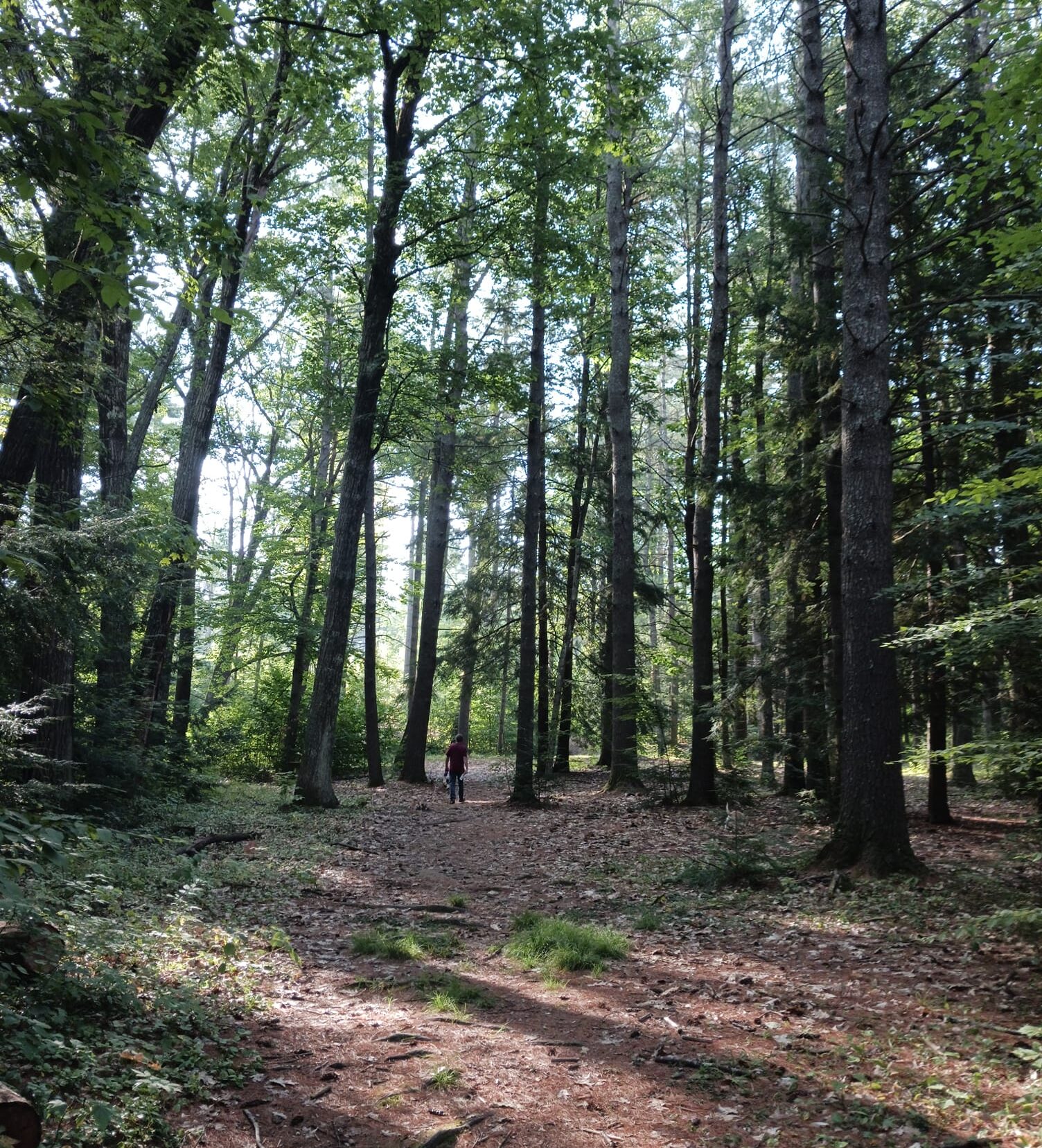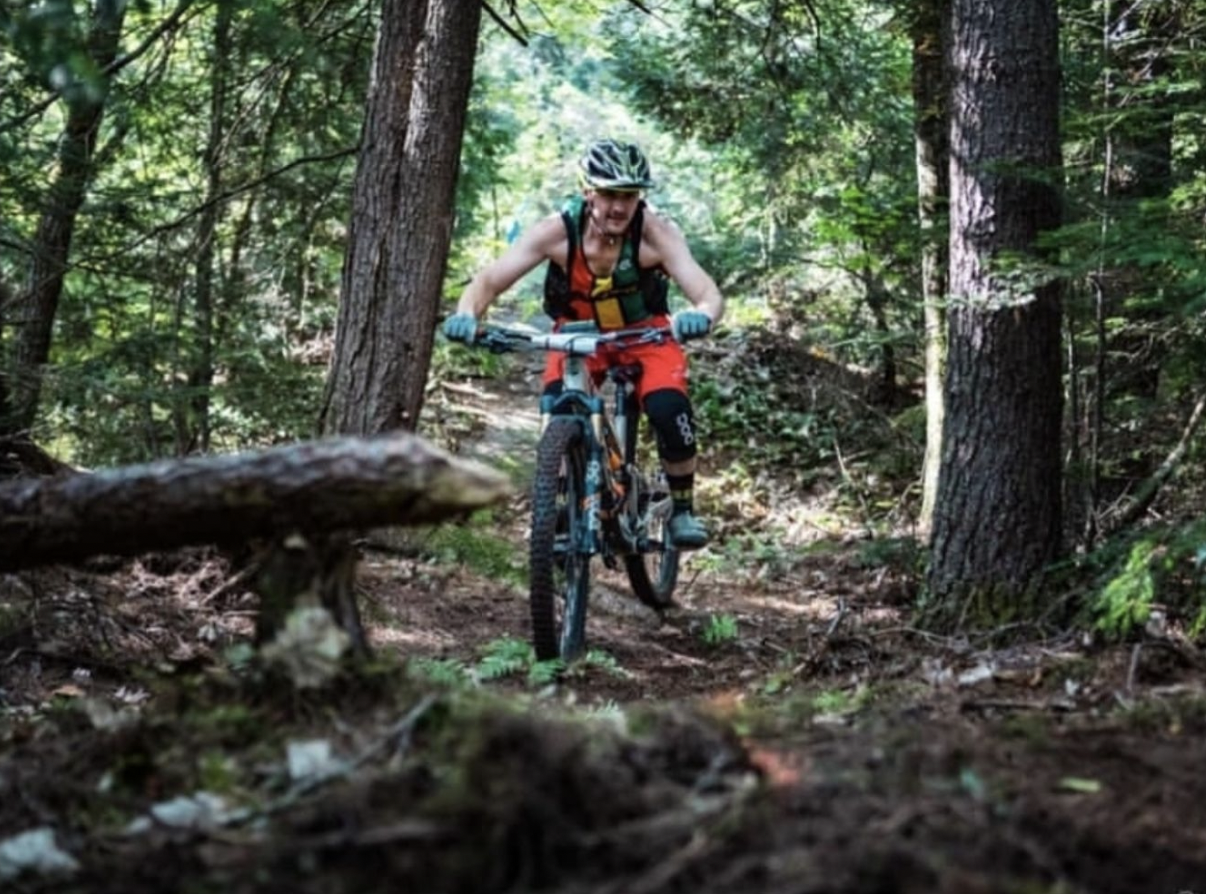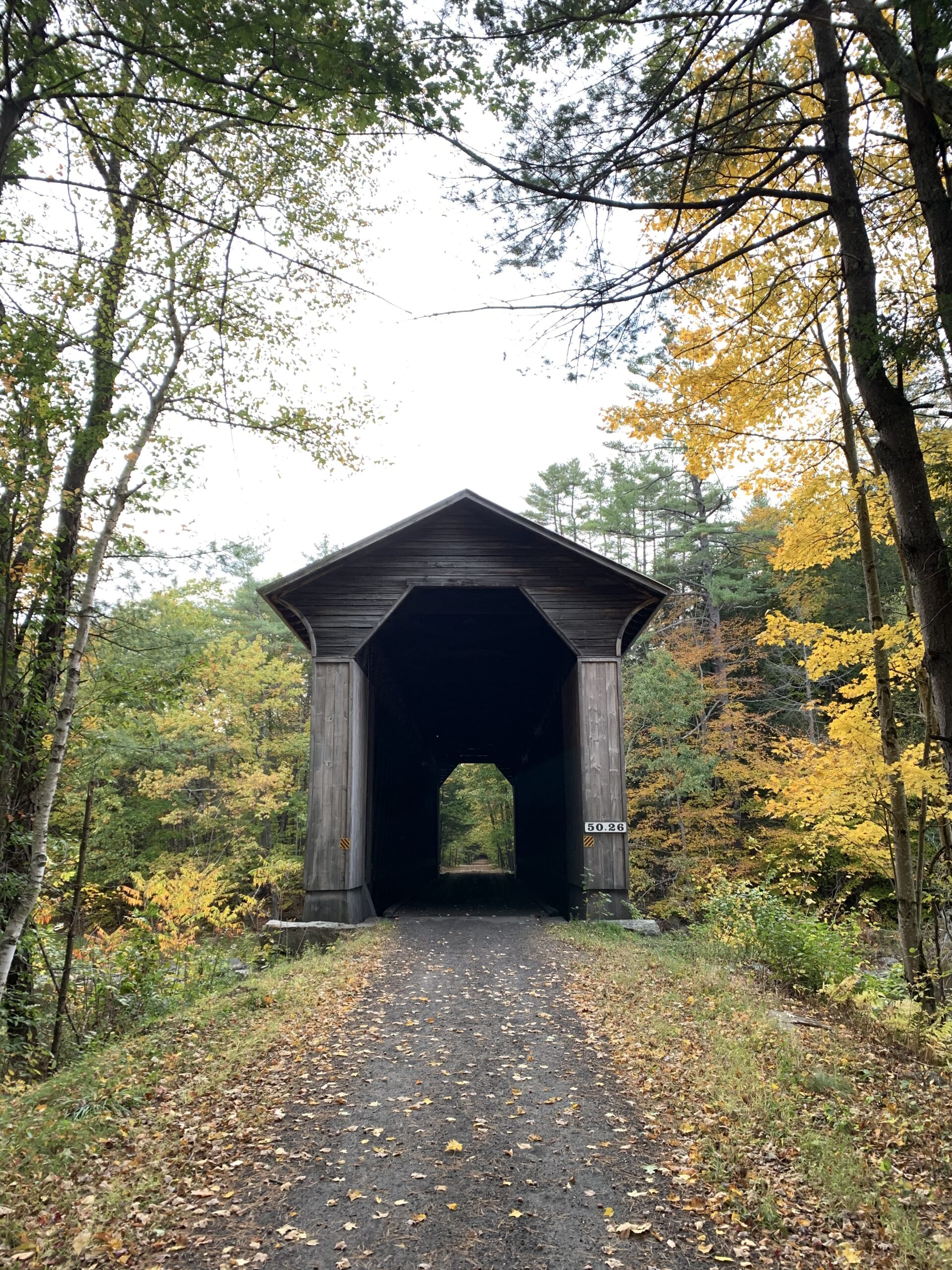Exploring the Trails of the Sugar River Region: A Pathway to Unity, Conservation, and Economic Growth
Exploring the Trails of the Sugar River Region: A Pathway to Unity, Conservation, and Economic Growth
Written by Madeline Ferland on March 12, 2024.
The beloved trails network within Sullivan County is a sprawling expanse of multi-use pathways that wind through our scenic landscape, offering countless opportunities for exploration, recreation, conservation, and community engagement. The Trails Council is a shared initiative of Discover Sugar River Region, the University of New Hampshire Cooperative Extension, and the Sullivan County Government born from a shared passion for preserving and enhancing our trail system. The Council took root during the February Sugar River Social at Forbes Tavern & Events in Grantham, during which a dedicated group of trail enthusiasts brought their unique perspectives shaped by regular interactions with these pathways and discussed how we can move forward in instating the Sullivan County Trails Plan (view or download by clicking the link).
We envision Sullivan County’s trails flourishing in five years – an all-benefitting blend of accessibility, biodiversity, and recreational opportunities, seamlessly weaving through our communities and fostering a deeper connection to our environment for generations to come.
To join us in this endeavor, reach out to us at Admin@SugarRiverRegion.org or Becky Levy from the University of New Hampshire Cooperative Extension – Rebecca.Levy@unh.edu, the Trails Committee organizer.
The Visionary Approach: Sullivan County Trails Plan
Recognizing the immense potential of its natural assets, Sullivan County has embarked on a transformative journey with the formulation of the Sullivan County Trails Plan—a visionary blueprint aimed at unifying the community, preserving trails, and fostering sustainable economic growth. Spearheaded by the newly formed Trails Council, this initiative seeks to harness the collective efforts of residents, trail organizations, local leaders, and businesses to propel the Sugar River Region into a premier destination for outdoor recreation.
At the heart of this endeavor lies a deep understanding of the pivotal role that trails play in enhancing quality of life, stimulating economic vitality, and shaping regional identity. By conducting extensive community engagement, Sullivan County has illuminated the intrinsic connection between its trails and the well-being of its residents. Through public forums and surveys, stakeholders have voiced their desire for greater access to recreational trails, citing their profound impact on physical and mental health.
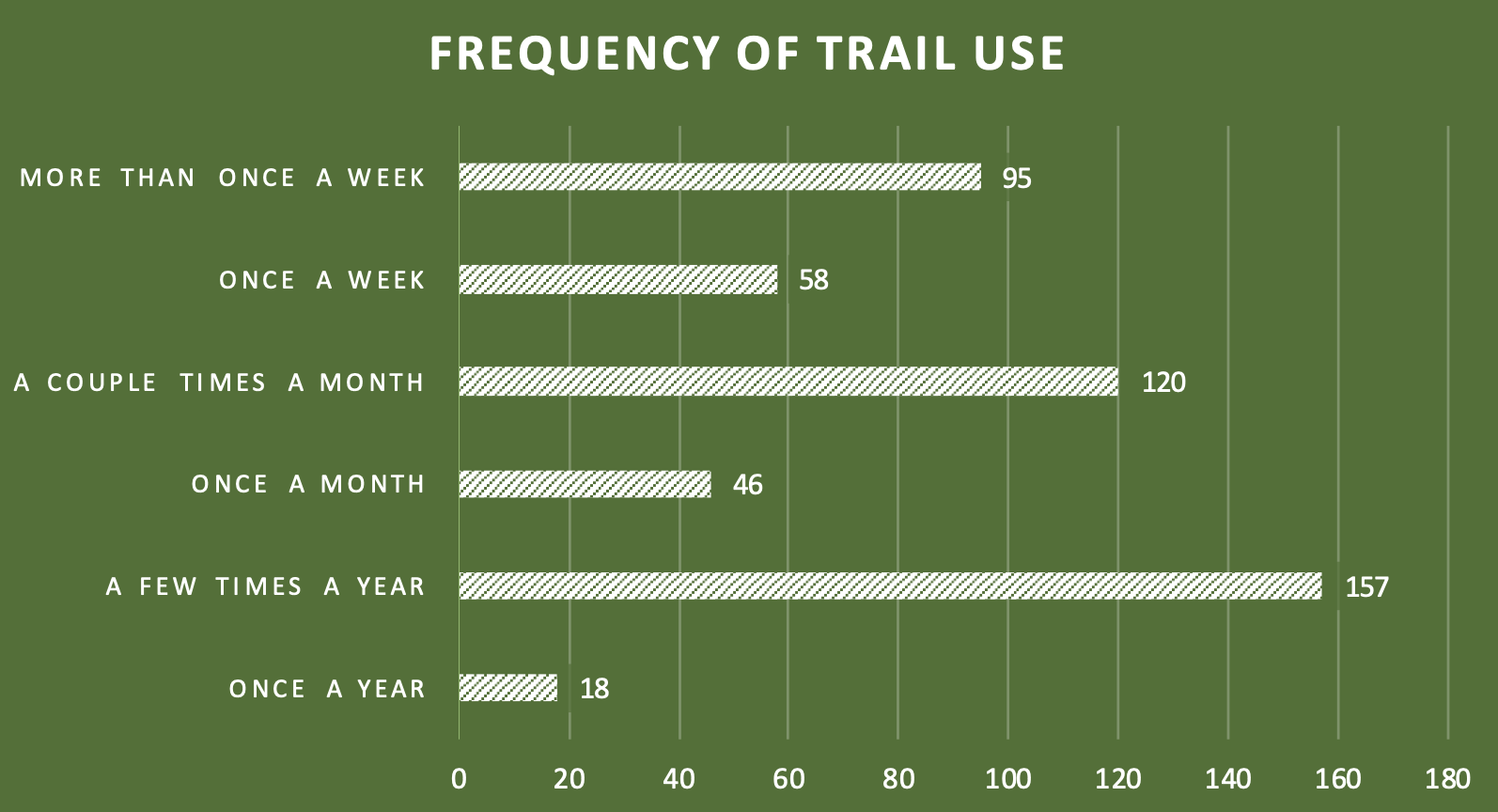
Frequency of Trail Use. Image Credit: Upper Valley Trails Alliance (UVTA) and Upper Valley Lake Sunapee Regional Planning Commission (UVLSRPC); 2022-2023 survey results.
The Sullivan County Trails Plan represents a holistic approach to trail management, encompassing both motorized and non-motorized trails to accommodate diverse user preferences. With the support of key partners such as the Upper Valley Lake Sunapee Regional Planning Commission and the Upper Valley Trails Alliance, Sullivan County has undertaken comprehensive inventorying and promotion efforts in collaboration with Discover Sugar River Region to spotlight existing trails and identify opportunities for expansion and enhancement.
Understanding Trail Users: Diverse Preferences and Activities
Understanding the diverse array of trail users and their preferences is essential for tailoring the Trails Plan to meet the needs of the community. According to input from trail maintenance groups, the current makeup of trail uses spans a wide spectrum, reflecting myriad varied interests:
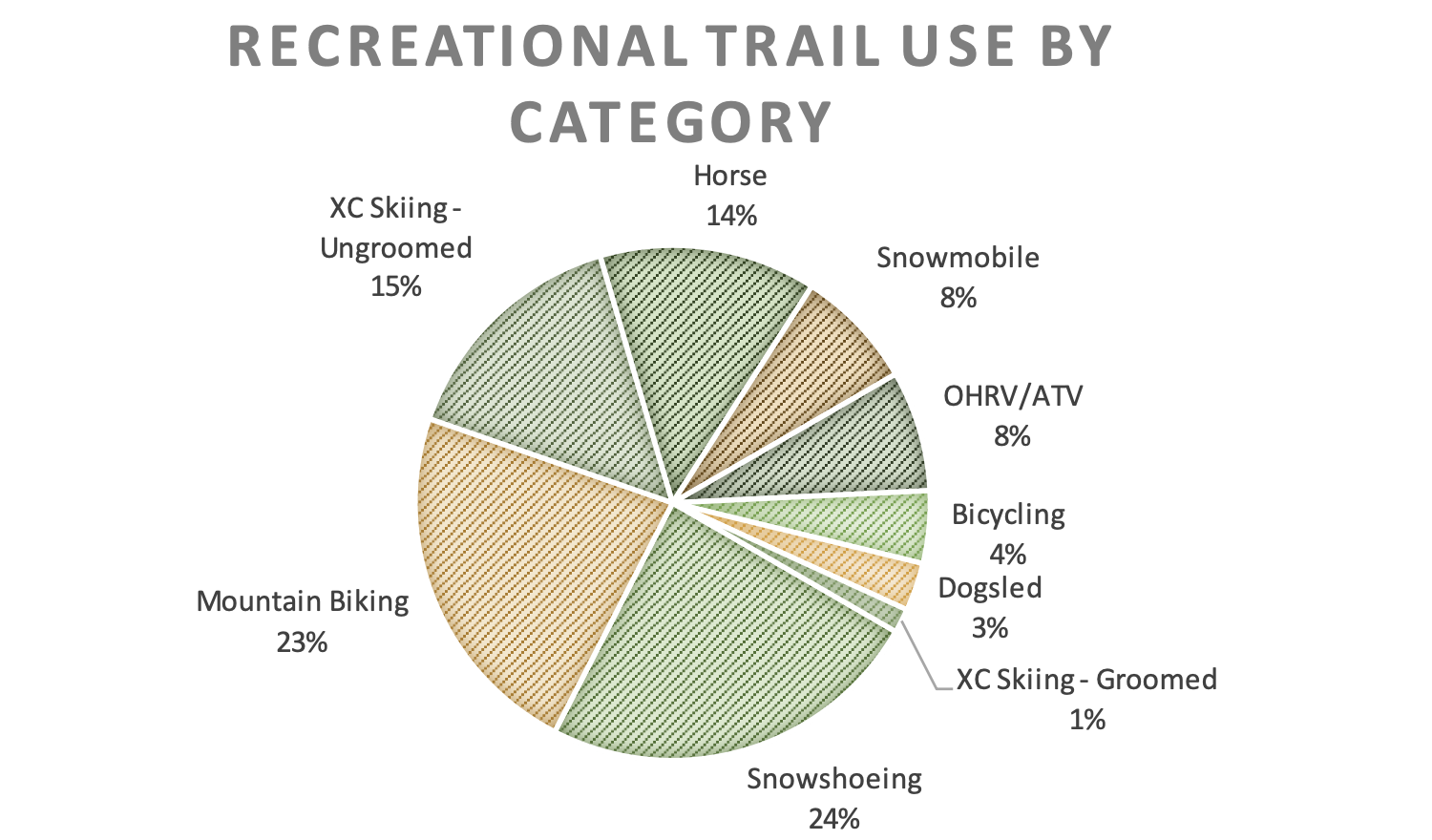
Recreational Trail Use by Category. Image Credit: Upper Valley Trails Alliance (UVTA) and Upper Valley Lake Sunapee Regional Planning Commission (UVLSRPC); 2022-2023 survey results.
By recognizing and accommodating the diverse needs of trail users, we can foster a more inclusive and accessible trail environment.
Bridging Trail Gaps: Addressing Physical and Social Challenges
Central to the Trails Plan’s success is the cultivation of strategic partnerships and investments aimed at improving trail quality and connectivity. By bridging gaps in the trail network and providing towns with comprehensive maps, Sullivan County aims to create a cohesive trail system that caters to residents and visitors alike. Furthermore, the plan emphasizes the importance of sustainable stewardship practices to ensure the long-term viability of the trail network.
Speaking of gaps, one of the most pressing issues facing the Sugar River Region’s trails is the presence of notable gaps—both physical and social. Physically, these gaps manifest as interruptions in trail connectivity, hindering seamless navigation between different trail systems and essential amenities. Whether it’s the lack of safe pedestrian routes between trails or the absence of accessible transportation hubs, these gaps diminish the overall usability and appeal of the trail network.
The division between various user groups—such as hikers, snowmobilers, and mountain bikers— also underscores the need for greater cohesion and collaboration within the community. By fostering cross-pollination of volunteer efforts and engagement, we can bridge these social divides and create a more inclusive and supportive trail environment.
Preserving the Trails: Mitigating Threats and Ensuring Sustainability
The threats facing Sullivan County’s trails extend beyond mere physical gaps. Erosion from flash flooding and climate extremes poses a significant risk to trail integrity, necessitating proactive measures to mitigate environmental damage. Additionally, incompatible land uses and conflicts between different user groups jeopardize the harmony and sustainability of our trails. It’s crucial to implement strategies that promote responsible trail usage and foster positive relationships between trail users and landowners. By respecting private property rights and cultivating a culture of stewardship, we can safeguard trail access for generations to come.
The financial constraints and lack of funding pose significant challenges to trail maintenance and development efforts. As we seek to expand and improve our trail network, it’s imperative to explore innovative funding mechanisms and leverage partnerships with government agencies, non-profit organizations, and local businesses. We can overcome these financial barriers and ensure the long-term viability of our trails by pooling our resources and expertise, which is why Discover Sugar River Region is excited to collaborate to promote and market the Trails Plan initiative and activities.
Through these concerted efforts, Sullivan County endeavors to position itself as a beacon of outdoor recreation, drawing visitors from far and wide to experience the splendor of the Sugar River Region. By capitalizing on its natural resources while fostering a sense of community stewardship, The Trails Council aims to forge pathways of unity, conservation, and prosperity for all trail users.
Join us in our mission to explore, preserve, and celebrate the natural wonders of the Sugar River Region—one trail at a time. If you are interested in getting involved, be on the lookout for our regularly occurring future meetings and contact us at Admin@SugarRiverRegion.org or our Trails Council organizer Becky Levy (UNHCE’s Community and Economic Development Field Specialist for Sullivan County) – Rebecca.Levy@unh.edu.
